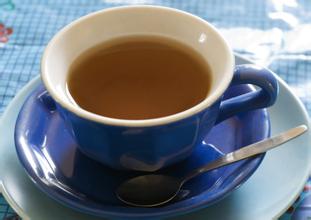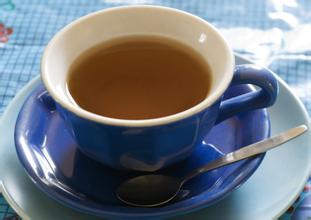Introduction to the characteristics of Flavor and Taste quality of Brazilian Coffee Bean planting Map
Base Map of Coffee Bean cultivation in Brazil
Top Brazilian coffee may not always be easy to get. Because, after the United States, Brazil itself has become the world's largest consumer of coffee and is still growing rapidly. A large number of high-quality coffee has found a place in the domestic market, and consumers' tastes are becoming more and more picky. Brazil's rapid development in the coffee industry may be due to the regular coffee competition held in Brazil. It is usually hosted by the Italian Federation of espresso roasters and the "International winning Cup" coffee judging committee. These competitions not only attract people's attention to high-quality coffee in Brazil, but also drive the market price of top coffee in Brazil. today, Brazil has established the brand of special coffee as the origin of special coffee, while the Brazilian Special Coffee Association (BSCA), which has many of Brazil's most important producing areas, represents the interests of the world's top coffee growers and the most advanced coffee production technology. In Missouri, for example, production has soared in the central region of Serrado over the past few years. Here, the vast Datterra plantation is not only the largest plantation in the world, but also a benchmark for producing high-quality coffee. Traditional coffee plantations in the south of the state, such as Lapanema, Alfenas and Vista Allegre, regularly produce some of the region's top coffee, although it is diverse, but Brazilian coffee suits popular tastes. For example, coffee produced in the northern coastal areas has a typical iodine taste, reminiscent of the sea after drinking. This kind of coffee is exported to North America, the Middle East and Eastern Europe because of the wide variety of Brazilian coffee, it cannot be included simply by the word "Brazilian". Like other Arabica coffee, Brazilian coffee is called Brazils to distinguish it from Milds coffee. The vast majority of Brazilian coffee is unwashed and sun-dried and is classified according to the name of the state of origin and port of transport. Although most of Brazil's 21 states grow coffee, the total production is mainly concentrated in Parana, Sao Paulo, Minas Gerais, Espirito Santo and Bahia, which alone account for 55% of Brazil's total output. Before World War II, Brazil accounted for 50% or more of the world's coffee production, now close to 30%. However, the country's impact on coffee around the world, especially on coffee prices, is significant. For example, two frost disasters in 1994 caused a sharp rise in global coffee prices. The continuous drought in Brazil since the beginning of this year has seriously affected the production of coffee beans. The decline in coffee production in Brazil has directly pushed up the price of coffee beans in the international market and may affect the coffee retail industry. The continuous drought in Brazil since the beginning of this year has seriously affected coffee bean production. The reduction in coffee production in Brazil has directly pushed up the price of coffee beans in the international market and may affect the coffee retail industry. Here, Brazilian coffee beans have also attracted the attention of the world.
Brazil is vividly compared to the "giant" and "monarch" of the coffee world. In fact, all blends run by big roasters contain some coffee from Brazil, and the vast majority of espressos are made mainly from Brazilian coffee.

Important Notice :
前街咖啡 FrontStreet Coffee has moved to new addredd:
FrontStreet Coffee Address: 315,Donghua East Road,GuangZhou
Tel:020 38364473
- Prev

Flavor description of Panamanian Rosa Coffee from its Origin, introduction to the method of Grinding Calibration
The first batch of coffee exported from Panama (Panama) is shipped in November, and almost all the high-quality coffee beans are shipped to France and Finland. Generally speaking, the price of Panamanian coffee belongs to the low and medium price, but its performance in the cup is often as good as that of any famous or even expensive coffee producing area.
- Next

Introduction to the method of grinding and calibration for the flavor description of Nicaraguan boutique coffee
Nicaraguan boutique coffee flavor description variety characteristics grinding scale treatment method introduces coffee is the main export product of Nicaragua. According to the president of the Nicaraguan Coffee Farmers' Federation, due to the poor harvest of coffee in Nicaragua's Pacific region, the country's total coffee production in 1998 may be 12% lower than that in 1997. 1997 1998 Coffee year, Nicaragua
Related
- Detailed explanation of Jadeite planting Land in Panamanian Jadeite Manor introduction to the grading system of Jadeite competitive bidding, Red bid, Green bid and Rose Summer
- Story of Coffee planting in Brenka region of Costa Rica Stonehenge Manor anaerobic heavy honey treatment of flavor mouth
- What's on the barrel of Blue Mountain Coffee beans?
- Can American coffee also pull flowers? How to use hot American style to pull out a good-looking pattern?
- Can you make a cold extract with coffee beans? What is the right proportion for cold-extracted coffee formula?
- Indonesian PWN Gold Mandrine Coffee Origin Features Flavor How to Chong? Mandolin coffee is American.
- A brief introduction to the flavor characteristics of Brazilian yellow bourbon coffee beans
- What is the effect of different water quality on the flavor of cold-extracted coffee? What kind of water is best for brewing coffee?
- Why do you think of Rose Summer whenever you mention Panamanian coffee?
- Introduction to the characteristics of authentic blue mountain coffee bean producing areas? What is the CIB Coffee Authority in Jamaica?

